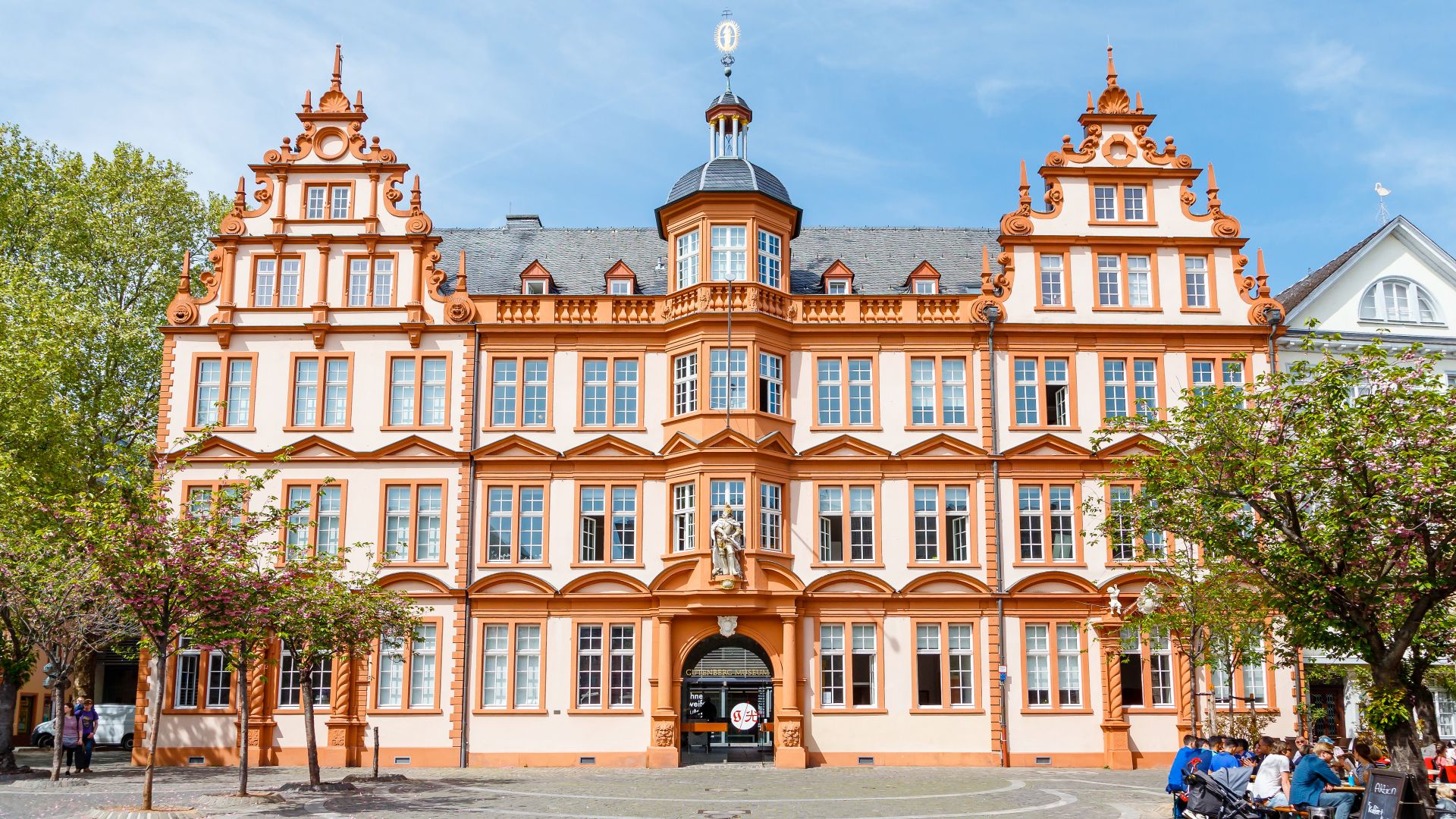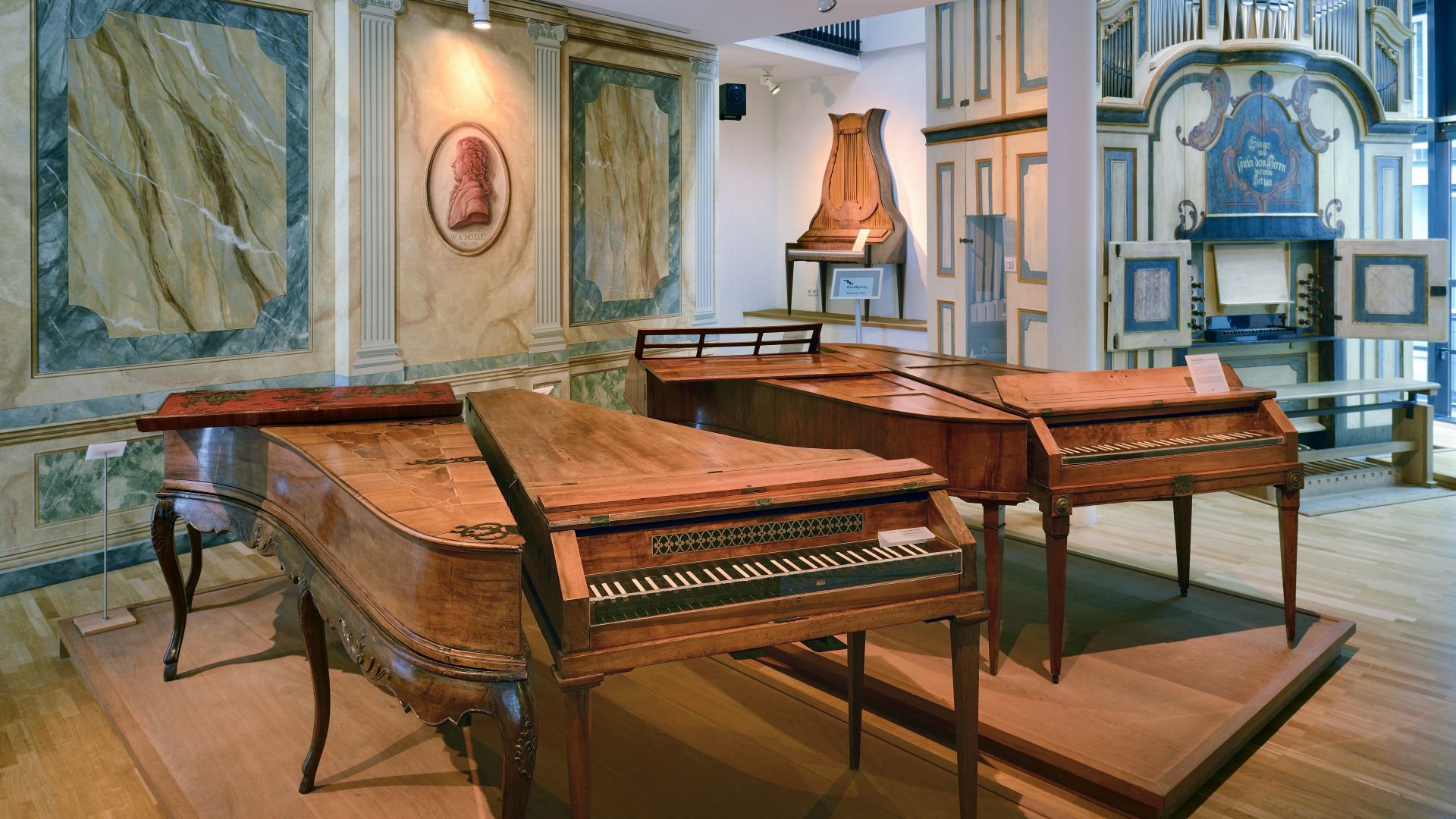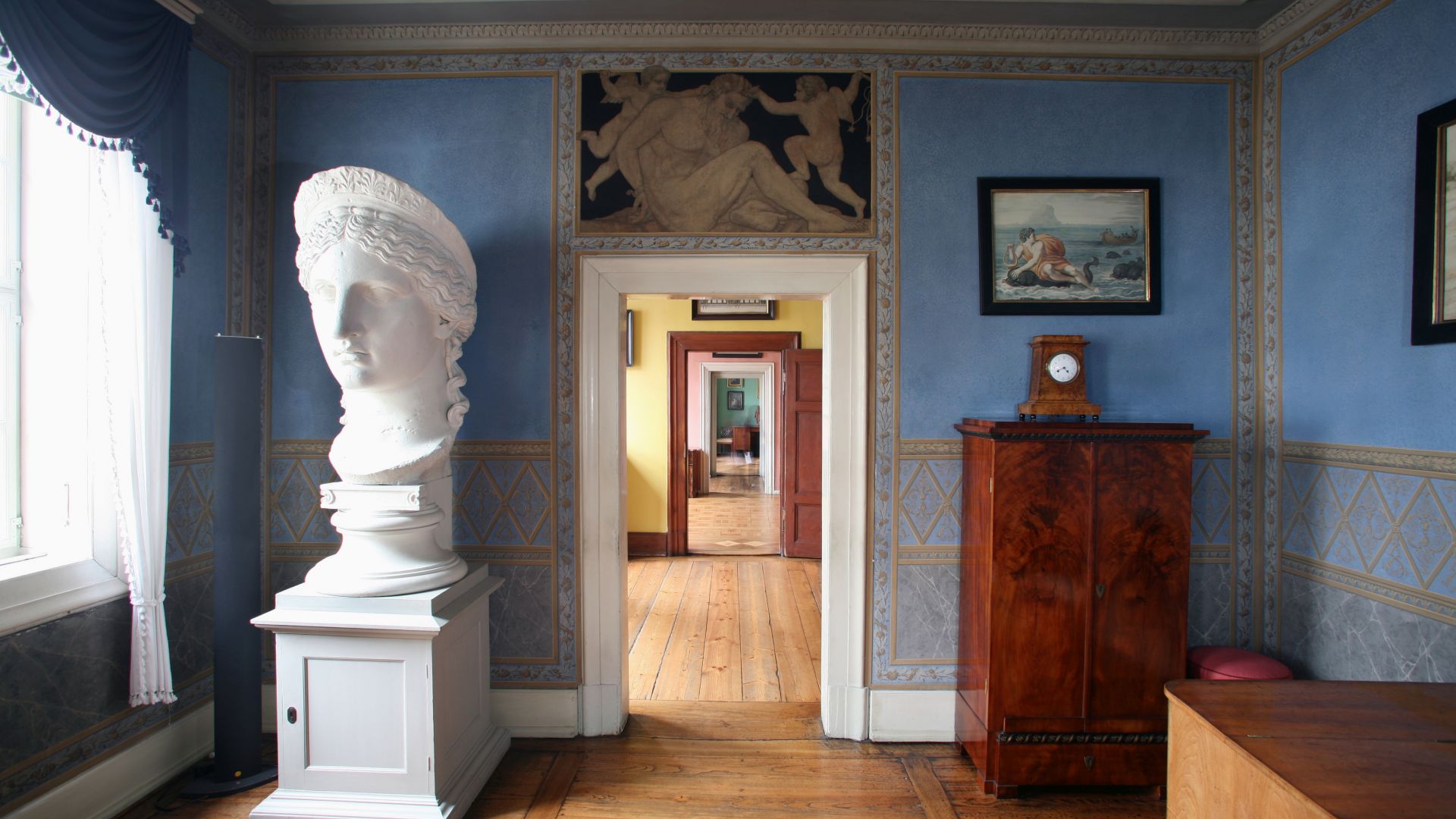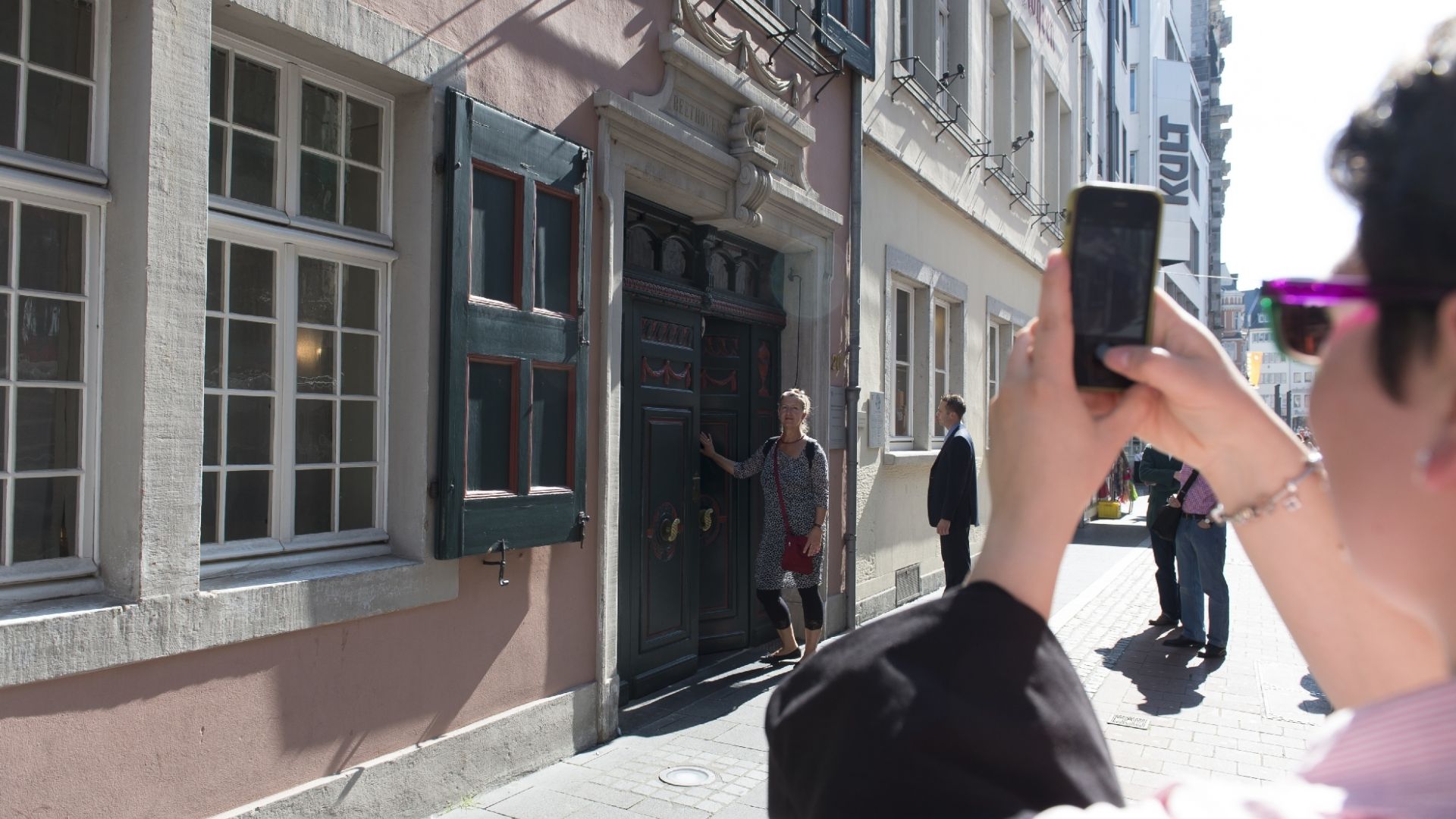Cities & Culture
Famous Germans under the spotlight: strong characters
Whether musicians, scientists or inventors: many Germans have achieved international fame. Some of them even have their own museum, where their lives and works are on display. Visitors can discover many fascinating facts about these famous personalities, including some that are rarely revealed.
Gutenberg Museum Mainz: International Museum for the Printing Arts
 Mainz: Gutenberg-Museum
©Adobe Stock (Branko Srot)
Mainz: Gutenberg-Museum
©Adobe Stock (Branko Srot)
Revolutionary – in the context of Johannes Gutenberg, this term is most certainly not an exaggeration. His invention of the printing press with movable type around 1450 radically changed the worldwide development of media and cultural history. Because of this, knowledge and education became accessible for everyone. A wealth of knowledge about the life and work of this man from Mainz – once voted "Man of the Millennium" by US journalists – as well as over four millennia of book, printing and writing culture can be found in the Gutenberg Museum opposite the cathedral. It is not surprising that it has enjoyed an outstanding international reputation since its inception in 1900. From cuneiform writing to modern typography, from the "most beautiful book of the Renaissance" to the "Columbia Press" of 1824, both permanent and changing special exhibitions comprising several thousand objects show a unique range of this "black art". This fascinating topic can also be experienced first-hand by means of innovative educational activities, for example in the experimental laboratory "Print Shop", or during demonstrations in the reconstructed "Gutenberg Workshop". Two Gutenberg Bibles, considered the most important and valuable works in the history of printing, are housed in a walk-in vault – and are not reconstructions but the actual original books.
Handel House in Halle: Musical Master, Museum Masterpieces
 Halle: Pianos in the Handel House
©DZT (Francesco Carovillano)
Halle: Pianos in the Handel House
©DZT (Francesco Carovillano)
Hallelujah, what an artist! George Frideric Handel is not only considered one of the greatest musicians of the Baroque era, but of the entire history of music – especially thanks to his famous "Messiah" creation with its world-famous Hallelujah Chorus. His birthplace and residence in Halle an der Saale, a place which dates back to the Middle Ages, is also renowned and has functioned as a Museum of Music since the late 1940s. A visit is truly worthwhile since the complete refurbishment and reconstruction, which was carried out in 2009 to mark the 250th anniversary of his death. The permanent exhibition, which covers 550 square metres and has won international design awards, is dedicated to the life and work of this exceptional composer. The collection comprises around 160 exhibits, mostly original paintings, engravings and musical instruments. The exhibition is very aesthetically pleasing, sometimes even state-of-the-art: for example, a miniature baroque theatre, on whose stage an animated Handel plays the harpsichord and describes eight of his 42 operas. The technical sophistication keeps on coming. In a digital simulation, several portraits are superimposed, providing a striking illustration of the change in the aging Handel's appearance and features. The lavish annual programme also includes concerts in the chamber music hall and the 16th-century timber hall, and instrument demonstrations in the impressive musical instrument exhibition.
Goethe National Museum Weimar: at Home with the All-Round Genius
 The Juno Room with bust of Juno Ludovisi in Goethe`s residence in Weimar
©TTG/Klassik Stiftung Weimar (Thomas Härtrich / transit)
The Juno Room with bust of Juno Ludovisi in Goethe`s residence in Weimar
©TTG/Klassik Stiftung Weimar (Thomas Härtrich / transit)
The stone steps to Goethe's residence on the Frauenplan are worn out. Imagine how many people have climbed them! During the nearly five decades when the "prince of poets" lived here, in the years following, and even more so since 1885, when the house became the Goethe National Museum ? At any rate, for the past century, visitors have been guided through the side entrance – and there were definitely lots of them: several million. This tremendous interest is not surprising, nor is its inclusion in the UNESCO World Heritage Site "Classical Weimar" – after all, this is the most important museum for showcasing and researching the life and work of the world's most famous German poet. Visitors can explore his living quarters, which were restored after the destruction of the war in 1945, as well as his reconstructed study, the reception and art collection rooms, and the household garden. Original furnishings and collectibles feature everywhere. Even deeper insights are provided by the neighbouring eleven-room exhibition "Flood of Life – Storm of Deeds", which illustrates Johann Wolfgang von Goethe's complexity far beyond his literary output. This is possible not only because of the modern presentation, but also because of the unique wealth of valuable art and natural science objects from Goethe's collections, letters and diaries, as well as personal memorabilia.
Beethoven House Bonn: A Joyful, Beautiful, Music Museum
 Bonn: Visitors in front of the Beethovenhaus
©Beethoven Jubiläums Gesellschaft gGmbH (Barbara Frommann)
Bonn: Visitors in front of the Beethovenhaus
©Beethoven Jubiläums Gesellschaft gGmbH (Barbara Frommann)
250 years of Ludwig van Beethoven: 2020 should have been an enormous birthday party for the most famous composer of all time – and the city's most famous son. Due to the pandemic, the people of Bonn had to postpone, change and cancel many events. But it's a good thing that probably the best birthday present had already been revealed at the end of 2019: the renovated museum, which has been given a fresh new look thanks to colourful rooms and carefully arranged furnishings Beethoven House. For the anniversary, the rooms of the winding house in which young Ludwig spent the first five years of his life were completely redesigned, and no longer arranged chronologically, but thematically. Moreover, a treasure chamber with original manuscripts, a music room for regular concerts on historical keyboard instruments and a separate area for temporary exhibitions have been added. In short: the world's largest and most diverse Beethoven collection, which includes not only music manuscripts, sheet music and letters but also many pieces of furniture and objects from Beethoven's everyday life (including the important hearing aids), has become even larger, more emotional and, thanks to media stations and app guides, much more modern.